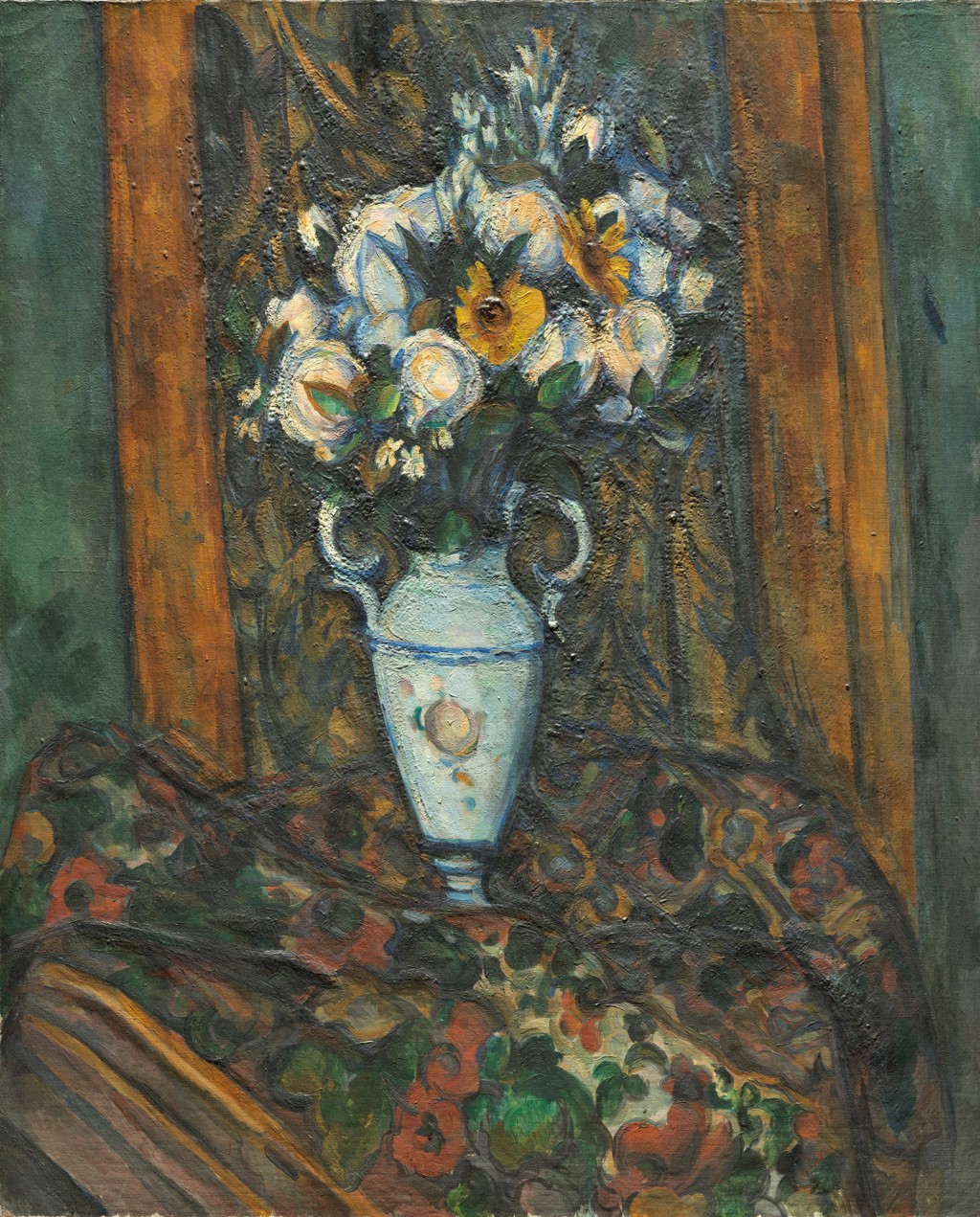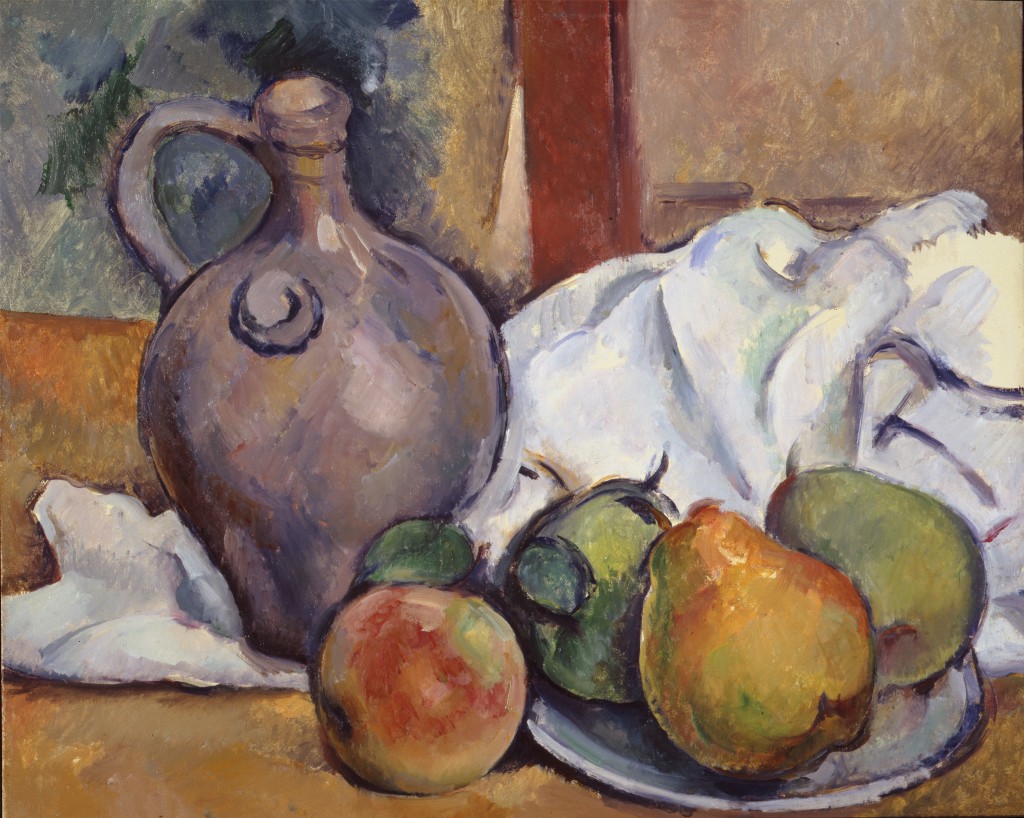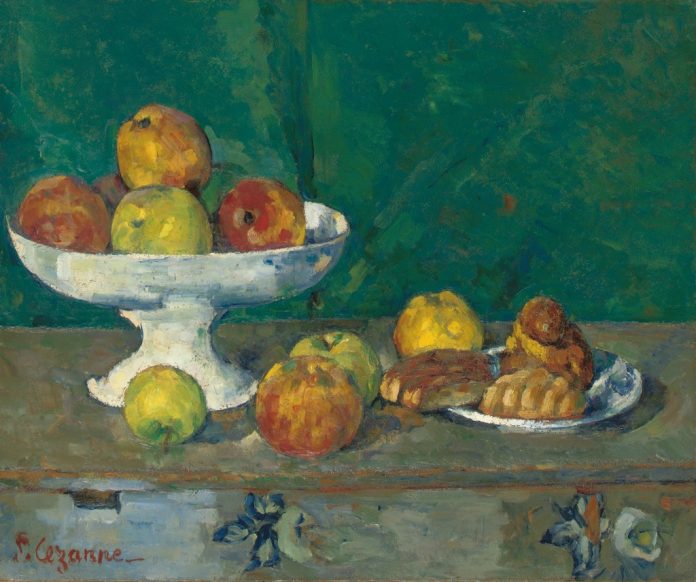Cezanne exhibition: The World is an Apple: The Still Lifes of Paul Cezanne will be on view at the Barnes, at 20th and the Parkway, through Sept. 22. PHOTOS COURTESY OF THE BARNES FOUNDATION
Seven weeks ago, the Barnes Foundation debuted an exhibition aiming to offer visitors an unprecedented assessment of the still life paintings of 19th-century Post-Impressionist Paul Cezanne. But for those who haven’t had the occasion or the inclination to visit the Barnes since its controversial move from the Main Line to the Ben Franklin Parkway two years ago, the Cezanne show presents an appetizing opportunity to take a closer look at the museum itself, too.
Northeast Philly folks might just find they share some things in common with Albert C. Barnes, the late collector and educator who established the foundation in suburban Merion 92 years ago — not the least of which would be his working-class beginnings and his loathing of the elitist art establishment.
The World is an Apple: The Still Lifes of Paul Cezanne will be on view at the Barnes, 20th and the Parkway, through Sept. 22.
“[Barnes] definitely believed that everyone should be able to appreciate art and that they didn’t have to have a high-falutin education to understand it,” said Judith Dolkart, the foundation’s deputy director of art and archival collections and Gund family chief curator, during a recent interview with the Northeast Times. “That’s why the formal principles of light, line, color and space were so important to him, because he believed everyone could understand them.”
In Cezanne’s work, Barnes found a favorite vehicle to convey his aesthetic and philosophical sensibilities. The foundation’s permanent collection includes 69 paintings by Cezanne, second only in number to the 181 by the pre-eminent Impressionist Pierre-Auguste Renoir.
The World is an Apple features 21 additional paintings on loan from a variety of museums, academic institutions and private collections. As a group, they shed new light on Cezanne’s use of table settings, flower arrangements and even human skulls as subjects throughout his career to develop his own techniques and style.
“As a curator, you always look for holes in the scholarship,” said Benedict Leca, the exhibition curator and director of curatorial affairs at the Art Gallery of Hamilton in Ontario, which will host the exhibition after it leaves Philadelphia. “Cezanne is one of those figures who have been studied every which way. … The still lifes, oddly enough, are the one area that had not been approached [by scholars] as a distinct group of works from a genre perspective.”
Perhaps not coincidentally, the art establishment of Cezanne’s time (spanning the early 1860s until his 1906 death) didn’t think much of still life as a genre, compared to nobler subjects such as portraits or historical themes. From his earliest years, the artist set out to distort that perception, famously “vowing to astound the world’s art capital with a humble apple” upon his arrival in Paris, as stated in the exhibition text.
“What he’s saying is that with a very modest object and with a genre of painting that is very low, if not the lowest on the hierarchy of paintings, he’s setting himself this challenge and declaring his ambition to use still life to make his name,” Dolkart said.
“When you’re in mid-19th century France and you decide that you’re going to specialize in landscape and still life, you’re making a statement right off the bat. … You’re forging an oppositional identity, which is what he wanted to do.”
For Cezanne, the apple was not a symbolic icon, a tool to evoke a Biblical story or a Greek myth. It was an object with a simple, yet profound form and color. He treated pears, vases, bowls, pitchers, glasses and skulls with the same disassociation from conventional context. Meanwhile, he broke new ground in his use of color, line, space and intentional distortion. Although his contemporary critics generally dismissed his work as crude, he gained a strong following of younger artists during his lifetime.
“What stands out most probably for other artists is the paint application, the individual strokes, the thickness of the paint and also the willful ineptitudes,” Leca said.
Barnes also recognized these qualities when he began collecting art. As the son of a butcher who had lost an arm in the Civil War, he graduated from Central High School in about 1890, became a physician and chemist and made his fortune by co-developing and marketing an anti-gonorrhea drug. A high school friend, William Glackens, helped him purchase his first 20 paintings in Paris in 1912. Glackens was an important American avant garde artist in his own right and will be the subject of a future Barnes exhibition.
Before his 1951 death, Barnes acquired some 800 paintings by European and American masters, as well as African sculpture, Native American ceramics, jewelry and textiles, antiquities from the Mediterranean and Asia, along with decorative arts, such as metal work.
He built a private gallery adjacent to his Merion home, where he meticulously arranged his foundation’s vast holdings and conducted extensive educational programming, while tightly restricting public access to the collection. He famously rejected requests by James Michener and T.S. Eliot to visit the gallery, although he freely allowed and encouraged students to come.
Upon his death, Barnes willed that the foundation maintain the gallery in its precise state while continuing its educational mission. In the early 1990s, leaders of the foundation cited mounting financial pressures for seeking to break the terms of the will. Ultimately, the foundation overcame two decades of legal battles to move the collection to the Parkway.
“One of the things that Barnes really loved was artists who utterly transformed painting through their own engagement with paint or the subject matter,” Dolkart said. “Cezanne was one of those artists. Cezanne was engaging in traditional subjects but he defined them in a whole new way.” ••

Cezanne exhibition: The World is an Apple: The Still Lifes of Paul Cezanne will be on view at the Barnes, at 20th and the Parkway, through Sept. 22. PHOTOS COURTESY OF THE BARNES FOUNDATION

Cezanne exhibition: The World is an Apple: The Still Lifes of Paul Cezanne will be on view at the Barnes, at 20th and the Parkway, through Sept. 22. PHOTOS COURTESY OF THE BARNES FOUNDATION





